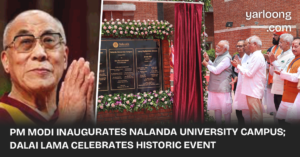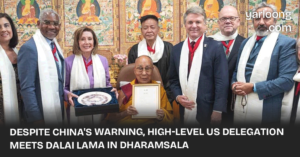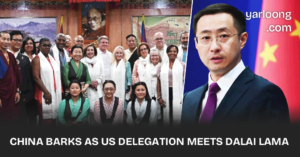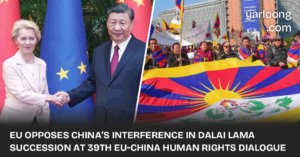Summary: The discovery of Camp Hale, where the CIA trained Tibetan freedom fighters, was celebrated in a major event attended by global Tibetan community members and key figures.

On Sunday, a significant ceremony was held at Camp Hale National Monument to commemorate the discovery of the site where the CIA trained Tibetan freedom fighters from 1959 to 1964. The event drew an international delegation, including members from as far as India, and marked a milestone for the global Tibetan community, according to a report by the Vail Daily.
A 14-Year Journey to Recognition
Dr. Carole McGranahan, a Tibet scholar and anthropologist from the University of Colorado Boulder, spearheaded the efforts to locate and recognize the site. Her journey began in September 2010 when a plaque honoring the Tibetan fighters was installed at Camp Hale through the efforts of former U.S. Senator Mark Udall. “It was the first official acknowledgment of Tibet’s history at Camp Hale,” McGranahan said, recalling the 2010 event during her speech on Sunday.
The Search for the Secret Camp
McGranahan, along with Vail-area local Tracy Walters, identified the location of the secret camp in February. Former CIA officer Bruce Walker, now 91, confirmed the site, recognizing the pictures used in the identification process. “I took the picture from the top of that hill, looking down,” Walker told the crowd, pointing to a nearby slope.
Celebrating the Tibetan Resistance
The event was organized in collaboration with the CU Department of Anthropology, the Tibet Himalaya Initiative, the Colorado Chushi Gangdrug, and the Vail Symposium. “It is one final commemorative event to celebrate the Tibetan resistance effort that was here,” Walker said, emphasizing the historical significance of the site known to Tibetans as “Dumra,” or garden.
ALSO READ: EU Officials to Visit Tibet Amid Human Rights Dialogue with China
The Camp Hale training site housed Tibetan dormitories, staff barracks, a gymnasium, classroom buildings, and more. Walker, who lived and taught at the site, explained, “This site was specifically used for the purpose of training radio teams who would be parachuted back to Tibet to join the resistance forces and send back messages about the resistance in Tibet on a real-time basis.”
Honoring the Chushi Gangdrug Army
The ceremony also marked the 66th anniversary of the Chushi Gangdrug Army, founded in 1958. A large portrait of Andrug Gonpo Tashi, the army’s founder, was displayed near the podium. Many attendees, including current and former members of the Chushi Gangdrug, gathered to celebrate the army’s heroics. Tashi Palmo, whose father died fighting in the Chushi Gangdrug, emphasized the significance of the event. “Without the Chushi Gangdrug, His Holiness would probably not have been able to escape Tibet successfully,” she said.
Personal Stories and Tributes
Pema Chinjor, a member of the Central Tibetan Administration, spoke about the Chushi Gangdrug’s efforts to help Tibetans escape to India. He recited words from the Dalai Lama, who acknowledged the protection provided by the Chushi Gangdrug in his book “The Noodle Maker of Kalimpong.”
Several relatives of the Tibetan fighters shared their stories. Tenzing Sonam, whose father Lhamo Tsering was the Chief of Operations for the Tibetan resistance, recounted the sacrifices made by those who trained at Camp Hale. “We should see it as one chapter in a continuing struggle for Tibetan independence,” Sonam said.
A Legacy of Courage
The event concluded with reflections on the courage and sacrifices of the Tibetan freedom fighters. Speaker Doma Norbu, whose father Athar Norbu trained at Camp Hale, expressed her joy at seeing young Tibetans at the ceremony. “Today I’m happy that we have so many Tibetans here acknowledging what we have done, and I hope that this continues,” she said.






